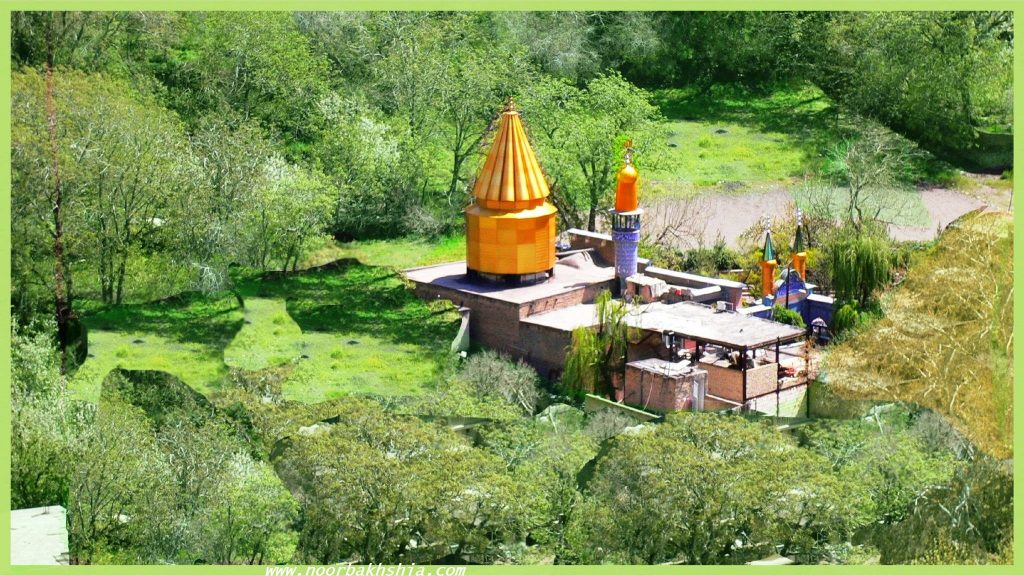Islam
Islam is not a new religion. Islam, has always been the only acceptable religion in the sight of God and it is the same eternal message revealed through the ages to all the messengers. Muslims believe that all of God’s prophets, which include Abraham, Noah, Moses, Jesus and Muhammad, brought the same message of Pure Monotheism. For this reason, the Prophet Muhammad (PBUH) was not the founder of a new religion, as many people mistakenly think, but he was the final Prophet of Islam. By revealing His final message to Muhammad, which is an eternal and universal message for all of mankind, God finally fulfilled the covenant that He made with Abraham, who was one of the earliest and greatest prophets.
The Holy Quran revealed on Prophet Muhammad PBUH via Gabriel. In Yathrib (Medina), where he was accepted as an arbitrator among the different communities of the city under the terms of the Constitution of Medina, Muhammad began to lay the foundations of the new Islamic society, with the help of new Quranic verses which provided guidance on matters of law and religious observance. The verses of this period emphasized his place among the long line of Biblical prophets, but also differentiated the message of the Quran from Christianity and Judaism.
Sufism and the Concept of Imamat
Divinely Appointed Imams
Sufism is directly from the Qur’an, constantly recited, meditated, and experienced, that Sufism proceeded, in its origin and its development. Other practitioners have held that Sufism is the strict emulation of the way of Muhammad PBUH, through which the heart’s connection to the Divine is strengthened
Sufis believe that by giving bayʿah (pledging allegiance) to a legitimate Sufi Shaykh, one is pledging allegiance to Muhammad (PBUH); therefore, a spiritual connection between the seeker and Muhammad is established. It is through Muhammad that Sufis aim to learn about, understand and connect with God. Hazrat Ali A.S is regarded as one of the major figures among the Sahaba who have directly pledged allegiance to Muhammad, and Sufis maintain that through Ali, knowledge about Muhammad and a connection with Muhammad may be attained. Such a concept may be understood by the Hadith, which Sufis regard to be authentic, in which Muhammad said, “I am the city of knowledge and Ali is its gate”. Eminent Sufis such as Ali Hujwiri refer to Ali A.S as having a very high ranking in Tasawwuf. Furthermore, Junayd Baghdadi regarded Ali as Sheikh of the principals and practices of Tasawwuf.
The Sufi chain starts from Ali A.S. They are named Imam, Sheikh and peer. But Arabic word Sufi and Imam is mostly used. That’s why Ali A.S is called the first Imam. Prophet Muhammad PBUH appointed Ali A.S as first Imam. So Ali A.S got ijazah (permission) directly from prophet Muhammad PBUH. Later Ali A.S appointed Imam Hassan A.S and it continued till Imam Mehdi A.S. There are 12 divinely appointed Imam.
Deputy of Divinely Appointed Imam
During the lifetime of Imam Ali Raza A.S Maruf-e-Karkhi being the freed slave and disciple of Imam Ali Ridha A.S, formed part of that lineage. He was a deputy to Imam Ali Raza A.S. The concept of Deputy Imam starts from Maroof-e-Karkhi. He is the first Imam-e-Izafi (Deputy to Imam) or Sufi master. After Maroof-e-Karkhi, Sirr-e-Saqti and Junaid Baghdadi were also deputy to Imam-e-Haqiqi.
Sufi Orders
Sufi order or silsila is a chain traced back to Muhammad PBUH. After Ali A.S many Sufi order started. They were named after the Shaikh or Imam. For example Marufia is named after Sheikh Maruf-e-Karkhi, Kubrawwia is named after Najmudin-e-Kubra.
Concept of Golden Chain
Meanwhile multiple Sufi orders came into existence and each Sufi order claimed that they are part of the original lineage, they called it Silisla-e-Zahab (Golden Chain). This chain goes back to Prophet Muhammad PBUH via Maroof-e-Karkhi.
The First Sufi Jurisprudence and Sufi Publications
One of the important things to keep in mind is that the members of the Golden Chain Sufi lineage never accepted the traditional jurisprudence of Both Shia and Sunni. They continued the teachings of their previous masters (Imam) from which they gained ijazah (permission). For example Maroof-e-Karkhi continued the teachings of Imam Ali Raza A.S which he A.S gained from previous Imams. They practiced the true form of Islam which they received from their Imam.
Role of Syed Ali Hamadani A.R
Syed Ali Hamadani was a well known Sufi scholar, writer and a poet. He is one of the prominent figure in The Golden Chain. Some of his books are Zakheerat-ul-Mallok, Aorad-e-Fathia and Risala Ameeria.
Role of Shah Syed Muhammad Noorbakhsh A.R
In 14th century the situation became worse when multiple Sufi orders came into existence. At that time Syed Muhammad Noorbakhshs who was the disciple of Khwaja Ishaq Khatlani and Syed Ali Hamadani wrote the first Sufi Jurisprudence book namely Alfiqqat-ul-Ahwat along with another book Kitab-ul-Etiqadia. Later the members of the Golden Chain started to follow his books.
The followers of his jurisprudence book are called Noorbakhshi. Same as the followers of Imam Abu Hanifa’s book, Malki’s book are called Hanafi and Malikli.
 Shrine of Shah Syed Muhammad Noorbakhsh, Iran
Shrine of Shah Syed Muhammad Noorbakhsh, Iran
History of Noorbakhshia in Kashmir
Mir Shamsuddin Iraqi the disciple of Shah Qasim Faizbakhsh traveled Kashmir. It is commonly believed that he was the first to bring Fiqqat-l-Ahwat in Kashmir but according to some historians Syed Muhammad Noorbakhsh also visited Kashmir and Baltistan.
The Modern History of Noorbakhshia
Currently Noorbakhshi people are living in Baltistan region of Gilgit Baltistan, Pakistan and Ladakh and Kargil , Jammu Kashmir India. Small pockets of Noorbakhshia also reside in Pakistani cities of Karachi, Islamabad, Rawalpindi, Lahore, Quetta and many other places. While in India they also live in Shimla, Dhera Dun , Ambari, Nental and many places in India.